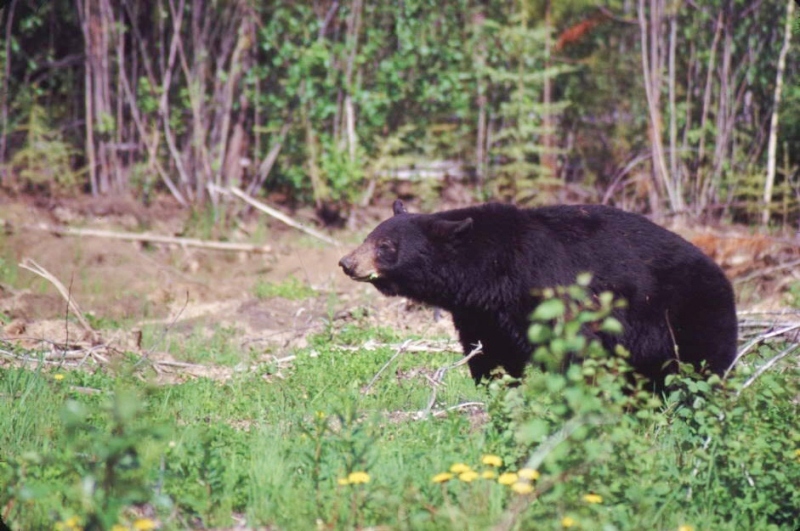Getting Photos of wildlife
By Dave Hanks
I come around a forest bend and much to my surprise –
There before me is a face, I look into its eyes –
One’s blood pressure and pulse rate so quickly they do rise –
Is this thing friendly or is this my demise?
Backing into cover, a thing I feel is wise –
Perhaps surrounding foliage will provide adequate disguise –
Keeping a safe distance is something I’d advise.
Sometimes I’ve not followed the advice in the poem that I gave myself. Just because I have a huge camera lens doesn’t guarantee good photos at any distance. You must get close enough to get quality pictures and this may require taking a risk. To minimize the risk, it is wise to learn a few things about the species you are after.
Animals will give signals. Be careful to watch for them. It may be tail position, head position, or a subtle change in their behavior. Once in Alberta, I saw a Bull Moose in a bog. I took one step off the road and up came his head alertly; and so I stepped one step back onto the road. The moose then went back to quietly feeding.
There is not only the risk, but some luck and patience is needed to get decent wildlife photos. The weather is not always pleasant and one is not always in the local of the animal one is seeking. A recent Yellowstone trip, in May, to find bears was disappointing. What I found was that the roads where I usually find them were all closed.
When the situation gives you the time, always take enough shots that you will be able to “cull” the photos when you get home. One great picture out of ten is worth it.
We saw this BLACK BEAR (photo) in Northern British Columbia. It was in an opening behind some bushes. She knew of my presence, and as I eased forward, she laid her ears back to let me know I was close enough. It was then time to carefully back away.
(You are in my space Mister!)
|
